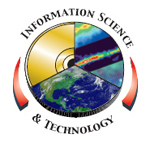
Please Note: The content on this page is not maintained after the colloquium event is completed. As such, some links may no longer be functional.
Dr. Brent Bos
Algorithm Applications in Robotic Planetary Exploration
Wednesday, September 30 , 2009
Building 3 Auditorium - 11:00 AM
Dr. Brent Bos was born and raised in Zeeland, Michigan and after a second grade, elementary school trip to the Roger B. Chaffee planetarium (named in honor of the fallen Apollo I astronaut) in Grand Rapids, Michigan decided that space exploration was his life's calling. He went on to study physics at the University of Michigan, Ann Arbor. After completing his undergraduate studies but before beginning graduate-level work in optical and planetary sciences at the University of Arizona, he worked in research and development for an automotive components supplier. His research in the area of automotive sensors and vision products led to him being credited as an inventor on 25 United States patents. Dr. Bos first became an active participant in planetary exploration as an undergraduate research assistant in 1991, studying cometary atmospheres at the University of Michigan Space Physics Research Laboratory. In 1997 he joined the imager for Mars Pathfinder team as a graduate research assistant and became active in Mars exploration. During his five year tenure with this group he analyzed imagery of the Martian surface to study Mars geomorphology and mineralogy and was involved in the development, building and testing of five Mars lander cameras for three different Mars missions. In 2001 he spent three weeks in the Canadian high arctic to participate in manned and unmanned Mars mission simulations and field test spacecraft instrumentation as part of the NASA Haughton-Mars project.
After successfully defending his Ph.D. in 2002, he joined the NASA Goddard Space Flight Center as a research physicist to participate in the James Webb Space Telescope (JWST) development effort. In August 2003 NASA headquarters selected the University of Arizona's Phoenix Mars lander to be the first mission of the Mars Scout program and in addition to supporting JWST.
Dr. Bos began participating in the tests and programmatic activities to prepare the Phoenix for launch and operation on the Martian surface ultimately culminating with his participation in Phoenix science operations during the summer of 2008. Dr. Bos currently serves as the lead JWST integrated science instrument module (ISIM) optical systems engineer and principal investigator for various planetary dust characterization instrument research and development projects. He has authored or co-authored papers that have appeared in the Astrophysical Journal, the Journal of Geophysical Research-Planets, Geophysical Research Letters and the Proceedings of SPIE. He currently resides in Laurel, Maryland with his wife and three young children.
IS&T Colloquium Committee Host: Ben Kobler
